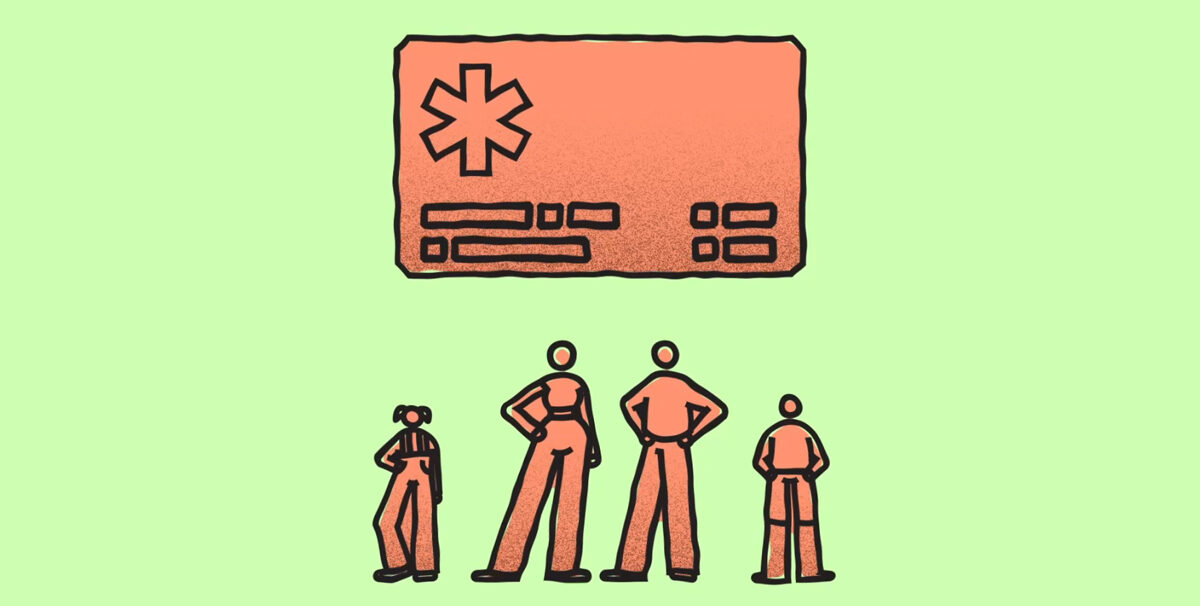Time to get outside, and encourage your friends, family, and children to unplug and take some time away from the screens and harsh fluorescent lights and enjoy some natural beauty. Getting the recommended amount of physical activity every day (30 minutes) doesn’t have to be a chore. An easy way to make exercise fun for the whole family is by playing outside. Being active outdoors is a great way to reconnect with nature, relieve stress and stay healthy.
Exercising (any physical activity) and simply walking outdoors has been proven to improve both mental and physical health. Being outside also helps to promote higher vitamin D levels, an important immunity boosting vitamin the body makes when skin is directly exposed to the sun. Many people are deficient in vitamin D, so being active (playing) outside can be a great way to boost these health benefits.
In addition, outdoor activity can help you maintain a healthy weight, boost immunity and lower stress, reduce inflammation, improves sleep, and increases happiness. Making outdoor activity part of living a healthy lifestyle can be as simple as taking a 20-minute walk, working in the yard, or simply playing outdoors.
This month our Take Action Weeks include:
- Get Active Outside
- Men’s Health Preventive Screenings, Part 1
- Men’s Health Preventive Screenings, Part 2
- Camping Safety
Get Active Outside
Getting the recommended amount of physical activity every day doesn’t have to be a chore. An easy way to make exercise fun for the whole family is by playing outside. Being active outdoors is a great way for you to reconnect with nature and stay healthy.
Why Exercise Outside?: Exercising in nature has been proven to improve one’s mental and physical health. Being outside also helps to promote higher vitamin D levels, a vitamin the body makes when skin is directly exposed to the sun. Many people are deficient in vitamin D, so exercising outside can be a great way to correct that. In addition, outdoor activity can help you maintain a healthy weight, boost immunity and lower stress. Exercising outside can feel less routine than working out in a gym.
Where to Go: There are many different places you can go to be active outside. You can exercise in your backyard or visit a local, state or national park.
What to Do: It’s easy to find affordable activities that you can enjoy outdoors. Some of these activities include:
- Walking or hiking—Go for a walk around the block after work or after dinner to get your heart pumping. Hiking and walking have been proven to improve heart health and can help you maintain a healthy waistline.
- Ride your bike—Riding a bike helps improve balance and endurance. Biking is a fun, a fun, family-friendly activity that everyone can enjoy. Consider biking to work or school to sneak in some extra exercise during the week.
- Go swimming—This low-impact activity burns more calories per hour than almost any other activity, and has been shown to improve strength, flexibility and cardiovascular health.
What to Bring: If you’re spending more than an hour or two outside, make sure you bring these items with you:
- Water so that you can stay hydrated, especially if it is warm outside
- Healthy snacks like nuts and carrot sticks
- Sunscreen, a hat and sunglasses to protect yourself from the sun’s rays
- Rain gear if rain is in the forecast
- Extra layers in case it gets cool outside
- A backpack so you can carry all of your supplies with you
Men’s Health Preventive Screenings, Part 1
Preventive care, including regular doctor visits, is important for everyone. The following screenings are recommended for men to maintain good health and catch health problems early:
Body Measurement
The American Heart Association recommends that men over age 20 have body measurements taken every two years, although your frequency may vary based on age and existing medical conditions. Measuring height, weight, waist and body mass index will determine whether you are overweight or obese and if your weight is a threat to your health. Overweight people are more likely to develop Type 2 diabetes and high blood pressure and increase their risk for other serious conditions.
Blood Pressure
Men should receive blood pressure screenings at least every two years. Preventive screening of blood pressure can lead to early detection of high blood pressure (hypertension). The cuff placed around the arm during a blood pressure screening measures the amount of pressure the heart generates when pumping blood through the arteries (systolic pressure), and the amount of pressure in the arteries when the heart is at rest between beats (diastolic pressure). Narrowed arteries limit the flow of blood.
In general, the more blood your heart pumps and the narrower your arteries are, the harder your heart must work to pump the same amount of blood. The longer high blood pressure goes undetected and untreated, the higher the risk of heart attack, stroke, heart failure and kidney damage.
Cholesterol Screening
Men age 20 or older should have their cholesterol tested every five years or more frequently if the doctor recommends it. High levels of cholesterol raise the risk of heart attack and stroke. Cholesterol is a form of fat carried in the blood by lipoproteins. Low-density lipoprotein (LDL or “bad” cholesterol) deposits cholesterol on the artery walls. High-density lipoprotein (HDL or “good” cholesterol) carries cholesterol away from the arteries to the liver for disposal. Problems occur when LDL deposits too much cholesterol on the artery walls, or when HDL does not take enough away. This can lead to a buildup of cholesterol-containing fatty deposits (plaques) in the arteries, a condition known as atherosclerosis.
Fasting Blood Sugar
The fasting blood sugar test measures the level of sugar (glucose) in the blood after fasting for eight hours. High glucose levels can be an indication of diabetes. The American Diabetes Association recommends a blood sugar test every three years for men age 45 and older. If you are at risk for diabetes, your doctor may perform these tests at an earlier age, and more frequently. You should also receive a blood sugar test if you experience symptoms of diabetes such as excessive thirst, frequent urination, unexplained weight loss, fatigue or slow-healing cuts or bruises.
Men’s Health Preventive Screenings, Part 2
Colorectal Cancer Screening
Colorectal cancer screening tests detect cancerous cells and growths, or polyps, that may become cancerous on the inside wall of the colon. Not everyone needs to be tested for colon cancer, though; the need depends on individual risk level. Three major factors influence the risk for colon cancer:
- Age 50 or older
- A family or personal history of colorectal cancer or precancerous polyps
- A personal history of inflammatory bowel disease
If you have these higher risk factors for developing colon cancer, the American Cancer Society (ACS) suggests talking with your doctor about screenings.
Prostate Cancer Screening
Prostate cancer is the most common cancer (besides skin cancer) in American men. As men age, their risk of prostate cancer increases. The ACS suggests that men age 50 and older speak to their doctor about prostate screenings. Consider initiating this talk at an earlier age if you are African-American or have a family history of prostate cancer.
Testicular Exam
Testicular cancer is the most common type of tumor in American men between the ages of 15 and 35. For this reason, all men should receive a testicular examination every time they have a physical exam. In addition, men of all ages, beginning in their teens, should perform a monthly self-examination of their testicles. Testicular exams should check for any masses, as well as changes in size, shape or consistency. For more information about how to do a proper self-exam, visit the Testicular Cancer Resource Center at thetcrc.org/tcexam.
Dental Exam
The American Dental Association recommends regular dental checkups in which the dentist examines the teeth and gums. In addition, the dentist can evaluate bite and determine problems such as teeth grinding or issues with the jaw joint.
Eye Exam
Eye examinations can determine a need for glasses or contact lenses or a need for a changed prescription. They can also identify new vision problems. Common vision problems detected by regular eye exams include glaucoma, macular degeneration and cataracts.
Hearing Test
A hearing test determines potential hearing loss. The American Speech Language Hearing Association recommends screening at least every 10 years through age 50, and every three years thereafter. Ask your doctor how often you should have your hearing checked.
Skin Exam
To check for skin cancer, the doctor will examine your skin from head to toe, looking for moles that are irregularly shaped, have varied colors, are asymmetric, are greater than the size of a pencil eraser, or have grown or changed since your last visit. Talk to your doctor about getting a skin exam during your regular checkup, and also perform routine self-exams, looking for any spots or moles that fit the above characteristics.
Camping Safety
Camping is an activity enjoyed by millions of Americans each year. To keep the experience fun and safe, there are some basic precautions that every camper should take.
Essentials
Before setting out, it is important that you have the following items:
- A medical kit—It should include a topical antibiotic, bandages, cotton swabs, diarrhea medication, antacids, scissors, tweezers and burn ointment, at a minimum.
- Flashlights—Bring several, and ensure beforehand that they are working correctly. Carry along some extra batteries as well. You may wish to purchase an LED flashlight; although more expensive, they last much longer.
- Water—It is never a good idea to drink straight from natural water sources such as lakes or streams. Bring along bottled water, water purification tablets or a water purifier. If you decide to bring bottled water, figure a gallon per person per day to cover drinking and cooking.
- Sunscreen and sunglasses—Being out in the sun for extended periods of time can cause irreversible skin and eye damage, not to mention the immediate discomfort sunburn will bring to your trip. Use proper protection.
- Waterproof matches— Even if everything else is wet, you can still make a fire.
- Insect repellant—Not only is sunburn unpleasant, but bug bites can be nasty too.
- Extra clothing—As hot as it may be during the day, nighttime may be an entirely different story. In addition, should your clothing get wet, you will want dry items to change into.
Tent Placement
It is important to consider the weather while choosing a site to set up camp. Avoid low-lying areas that could flood during a heavy rain. Also, in windy situations, avoid setting up your tent under a tree, as possible falling limbs could present a danger.
Animals
- Never approach or feed a wild animal. While it may look safe, their actions can be unpredictable.
- If camping in bear country, ensure that all dishes and food are kept at least 200 yards away from where you plan to sleep. Hang cooking utensils and food from a tree while not in use.
- If you bring along family pets, make sure they are properly supervised. It is important that your pet does not interfere with nearby campers or indigenous wildlife.
Campfires
Before starting your campfire:
- Clear the area of overhanging branches and brush.
- If possible, surround the fire pit with rocks and keep a bucket of water nearby.
- Do not build the fire near the tent(s) or anything else flammable.
- Never leave a fire unattended and ensure it is completely out before going to bed.
- Collect firewood from the ground only; never cut into living trees.
Activities
- Do not hike alone. Bring along a compass, water, snacks, a flashlight, and your cellphone if it operates in that area. The American Red Cross recommends a minimum of four people when hiking in an unfamiliar remote area, because if one person gets hurt, one can stay with them while the other two go and get help.
- Always supervise children in the water, even if they know how to swim. It is advisable that if the camping site is around water, every camper should know how to swim.
Food Safety
The United States Department of Agriculture recommends the following:
- Keep hot foods hot and cold foods cold—Bring a cooler with a cold source. Since it is difficult to keep items hot, it is suggested that you cook them ahead of time, cool them, and transport them cold to be heated up later.
- Keep everything clean—Bacteria present on raw meat and poultry can easily spread to other foods. This is called cross-contamination.
- When transporting raw meat, double wrap or double bag the products.
- Always wash your hands before and after handling raw meat.
- Never use the same platter and utensils for raw meat and cooked meat.
- Always cook all cuts of pork, ground beef and lamb to 160 degrees Fahrenheit. All poultry, hot dogs and leftover meat should reach 165 degrees Fahrenheit. Bring a meat thermometer along with your cooking supplies.
- Bring disposable wipes or biodegradable soap for hand- and dish-washing.
If you are camping for more than one night, you may want to bring the following foods to maintain your health and energy:
- Peanut butter (in a plastic jar)
- Concentrated juice boxes
- Canned tuna, ham, chicken or beef
- Dried noodles and soups
- Dehydrated foods
- Dried fruits and nuts
- Powdered milk and fruit drinks
Make sure you clean up all trash and belongings when leaving your campsite. Always strive to leave things better than you found them so other will get the chance to fully enjoy the beauty of nature just as you have.





